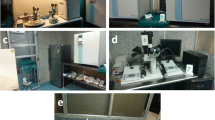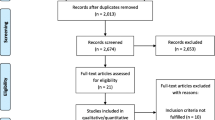Abstract
Quality of air in the clinical embryology laboratory is considered critical for high in vitro fertilization (IVF) success rates, yet evidence for best practices is lacking. Predominantly anecdotal reports on relationships between air quality and IVF success rates have resulted in minimal authentic clinical laboratory guidelines or in recommendations that are based on industrial cleanroom particulate standards with little attention to chemical air filtration. As a result, a nascent industry of costly, specialized air handling equipment for IVF laboratories has emerged to provide air quality solutions that have not been clearly assessed or verified. Clinics are embracing such technology because their embryology laboratories have become epicenters of assisted reproductive technology as the practice of IVF has moved to blastocyst transfers and utilization of trophectoderm biopsy for preimplantation genetic testing (PGT). Thus, a laboratory’s ability to culture, biopsy, and freeze blastocysts is a rate-limiting step that depends on technical proficiency and a supportive and stable culture environment based on a foundation of high-quality ambient air. This review aims to describe how evidence for the importance of air quality, in particular the role of volatile organic compounds (VOC), has resulted in an evolution of clinical practice that has arguably contributed to improved outcomes.


Similar content being viewed by others
References
Johnson JE, Boone WR, Bernard RS. The effects of volatile compounds (VC) on the outcome of in vitro mouse embryo culture. Fertil Steril. 1993;60:S98–9.
Boone WR, Johnson JE, Locke AJ, Crane MM, Price TM. Control of air quality in an assisted reproductive technology laboratory. Fertil Steril. 1999;71:150–4.
Cohen J, Gilligan A, Esposito W, Schimmel T, Dale B. Ambient air and its potential effects on conception in vitro. Hum Reprod. 1997;12:1742–9.
Schimmel T, Gilligan A, Garrisi GJ, Esposito Jr B, Cecchi M, Dale B. Removal of volatile organic compounds from incubators used for gamete and embryo culture. Fertil Steril. 1997;68(Supplement 1):S165.
Gilligan A, Schimmel T, Esposito Jr B, Cohen J. Release of volatile organic compounds such as styrene by sterile petri dishes and flasks used for in-vitro fertilization. Fertil Steril. 1997;68(Supplement 1):S52–S3.
Mayer JF, Nehchiri F, Weedon VM, Jones EL, Kalin HL, Oehninger SC, et al. Prospective randomized crossover analysis of the impact of an IVF incubator filtration system (Coda, GenX) on clinical pregnancy rates. Fertil Steril. 1999;72:S42–3.
Racowsky C, Jackson K, Nurredin A, Balint C, de los Santos M, Kelley J et al. Carbon-activation air filtration results in reduced in reduced spontaneous abortion rates following IVF. 11th World Congress on In Vitro Fertilization and Human Reproductive Genetics 1999;May 9–14 1999, Sydney, Australia O-59.
Battaglia DE, Khabani A, Rainer C, Moore DE. Prospective randomized trial of incubator CODA filtration units revealed no effect on outcome parameters for IVF. Fertil Steril. 2001;75:S6.
McLellan ST, Panagoulopoulos C, Dickinson KA, Wright DL, Toth TL, Lanzendorf SE. Effect of incubator air filtration system on IVF outcomes. Fertil Steril. 2001;76:S103.
Souza MCB, Mancebo ACA, da Rocha CA, Henriques CA, Souza MM, Cardoso FFO. Evaluation of two incubation environments—ISO class 8 versus ISO class 5—on intracytoplasmic sperm injection cycle outcome. Fertil Steril. 2009;91:1780–4.
Sene IS, Carvalho BF, Freitas TAF, Pádua LEM, Sousa GNS, Bona LN. Comparing HEPA versus HEPA-VOC filtration system: influence on embryo quality and clinical outcomes of in vitro fertilization. Fertil Steril. 2009;92:S234.
Esteves SC, Bento FC. Implementation of air quality control in reproductive laboratories in full compliance with the Brazilian cells and germinative tissue directive. Reprod Biomed Online. 2013;26:9–21.
ASRM. Revised minimum standards for practices offering assisted reproductive technologies. Fertil Steril. 2008;90:S165–S8.
von Wyl S, Bersinger NA. Air quality in the IVF laboratory: results and survey. J Assist Reprod Genet. 2004;21:283–4.
Van Voorhis BJ, Thomas M, Surrey ES, Sparks A. What do consistently high-performing in vitro fertilization programs in the U.S. do? Fertil Steril. 2010;94:1346–9.
Knaggs P, Birch D, Drury S, Morgan M, Kumari S, Sriskandakumar R, et al. Full compliance with the EU directive air quality standards does not compromise IVF outcome. Hum Reprod. 2007;22:i164–5.
Fisk WJ. Can sorbent-based gas phase air cleaning for VOCs substitute for ventilation in commercial buildings? IAQ 2007 Healthy and Sustainable Buildlings 2007;American Society of Heating, Refrigerating and Air Conditioning Engineers, Inc.
Esteves SC, Gomes AP, Verza Jr S. Control of air pollution in assisted reproductive technology laboratory and adjacent areas improves embryo formation, cleavage and pregnancy rates and decreases abortion rate: comparison between a class 100 (ISO 5) and a class 1.000 (ISO 6) cleanroom for micromanipulation and embryo culture. Fertil Steril. 2004;82(Supplement 2):S259–S60.
Hodgson AI, Destaillats H, Sullivan DP, Fisk WJ. Performance of ultraviolet photocatalytic oxidation for indoor air cleaning applications. Indoor Air. 2007;17:305–16.
Destaillats H, Sleiman M, Sullivan DP, Jacquiod C, Sablayrolles J, Molins L. Key parameters influencing the performance of photocatalytic oxidation (PCO) air purification under realistic indoor conditions. Appl Catal B-Environ. 2012;128:159–70.
Hay SO, Obee TN, Thibaud-Erkey C. The deactivation of photocatalytic based air purifiers by ambient siloxanes. Appl Catal B-Environ. 2010;99:435–41.
Dickey RP, Wortham Jr JWE, Potts A, Welch A. Effect of IVF laboratory air quality on pregnancy success. Fertil Steril. 2010;94:S151.
Jindal SK, Polotsky AJ, Buyuk ER, Lieman HJ, Gilligan A. Improved pregnancy rates following introduction of engineering controls of lab air quality. Fertil Steril. 2008;90(Supplement):S403.
Khoudja RY, Xu Y, Li T, Zhou C. Better IVF outcomes following improvements in laboratory air quality. J Assist Reprod Genet. 2013;30:69–76.
Forman M, Sparks AET, Degelos S, Koulianos G, Worrilow KC. Statistically significant improvements in clinical outcomes using engineered molecular media and genomically modeled ultraviolet light for comprehensive control of ambient air (AA) quality. Fertil Steril. 2014;102:e91.
Munch EM, Sparks AE, Van Voorhis BJ, Duran EH. Lack of carbon filtration impacts early embryo development. J Assist Reprod Genet. 2015:1–9.
Kresowik JD, Stegmann BJ, Sparks AE, Ryan GL, van Voorhis BJ. Five-years of a mandatory single-embryo transfer (mSET) policy dramatically reduces twinning rate without lowering pregnancy rates. Fertil Steril. 2011;96:1367–9.
Forman M, Polanski V, Horvath P, Gilligan A, Rieger D. Reductions in volatile organic compounds, aldehydes, and particulate air contaminants in an IVF laboratory by centralized and stand-alone air filtration systems. Fertil Steril. 2004;82(Supplement 2):S324.
Lawrence C. VOC levels in a new IVF laboratory with both central and in-laboratory photocatalytic air purification units. Alpha Scientists Reproduct Med. 2007;36:1–5.
Legro RS, Sauer MV, Mottla GL, Richter KS, Li X, Dodson WC, et al. Effect of air quality on assisted human reproduction. Hum Reprod. 2010;25:1317–24.
Perin PM, Maluf M, Czeresnia CE, Januario DA, Saldiva PH. Impact of short-term preconceptional exposure to particulate air pollution on treatment outcome in couples undergoing in vitro fertilization and embryo transfer (IVF/ET). J Assist Reprod Genet. 2010;27:371–82.
Perin PM, Maluf M, Czeresnia CE, Nicolosi Foltran Januario DA, Nascimento Saldiva PH. Effects of exposure to high levels of particulate air pollution during the follicular phase of the conception cycle on pregnancy outcome in couples undergoing in vitro fertilization and embryo transfer. Fertil Steril. 2010;93:301–3.
Worrilow KC, Huynh HT, Bower JB, Schillings W, Peters AJ. A retrospective analysis: seasonal decline in implantation rates (IR) and its correlation with increased levels of volatile organic compounds (VOC). Fertil Steril. 2002;78(Supplement 1):S39.
Destaillats H, Spaulding RS, Charles MJ. Ambient air measurement of acrolein and other carbonyls at the Oakland-San Francisco Bay Bridge toll plaza. Environ Sci Technol. 2002;36:2227–35.
Hall J, Gilligan A, Schimmel T, Cecchi M, Cohen J. The origin, effects and control of air pollution in laboratories used for human embryo culture. Hum Reprod. 1998;13:146–55.
Karagouga G, Fredrickson JR, Morbeck DE. Interaction of air quality and culture environment: role of protein concentration and oil quality on effects of volatile organic compounds (VOCs) on embryo development. Fertil Steril. 2014;102:e212.
Wolff HS, Fredrickson JR, Walker DL, Morbeck DE. Advances in quality control: mouse embryo morphokinetics are sensitive markers of in vitro stress. Hum Reprod. 2013;28:1776–82.
Worrilow KC, Huynh HT, Peters AJ. The innovative marriage between cleanroom and assisted reproductive technologies (ART)—the Design, Construction and National Environmental Balancing Bureau (NEBB) certification of a prototype class 100/Class 10 IVF laboratory cleanroom. Fertil Steril. 2000;74:S103.
Hill DL. Role of the in vitro fertilization laboratory in a negative pregnancy outcome. Fertil Steril. 2001;75:249–51.
Worrilow KC, Huynh HT, Gwozdziewicz JB, Schillings WA, Peters AJ. A retrospective analysis: the examination of a potential relationship between particulate (P) and volatile organic compound (VOC) levels in a class 100 IVF laboratory cleanroom (CR) and specific parameters of embryogenesis and rates of implantation (IR). Fertil Steril. 2001;76:S15–S6.
Worrilow KC, Huynh HT, Bower JB, Schillings WJ. Dissection of the high velocity air control (HVAC) system serving the in vitro fertilization (IVF) laboratory: the impact of ultraviolet-c band (UVC) irradiation on clinical pregnancy rates (CPR). Fertil Steril. 2007;88(Supplement 1):S89.
Higdon 3rd HL, Blackhurst DW, Boone WR. Incubator management in an assisted reproductive technology laboratory. Fertil Steril. 2008;89:703–10.
Morbeck DE, Fredrickson JR, Walker DL, Daftary GS. Culture in a benchtop incubator reduces in vitro stress in a sensitive mouse embryo QC assay: potential role of air quality. Fertil Steril. 2011;96:S249.
Acknowledgments
The author would like to thank Hugo Destaillats, Ph.D. of the Lawrence Berkeley National Laboratory and Jack H. Britt, Ph.D. for their helpful suggestions.
Author information
Authors and Affiliations
Corresponding author
Additional information
Capsule Quality of air in the clinical embryology laboratory is considered critical for high in vitro fertilization (IVF) success rates, yet evidence for best practices is lacking. This review aims to describe how evidence for the importance of air quality, in particular the role of volatile organic compounds (VOC), has resulted in an evolution of clinical practice that has arguably contributed to improved outcomes.
Rights and permissions
About this article
Cite this article
Morbeck, D.E. Air quality in the assisted reproduction laboratory: a mini-review. J Assist Reprod Genet 32, 1019–1024 (2015). https://doi.org/10.1007/s10815-015-0535-x
Received:
Accepted:
Published:
Issue Date:
DOI: https://doi.org/10.1007/s10815-015-0535-x




